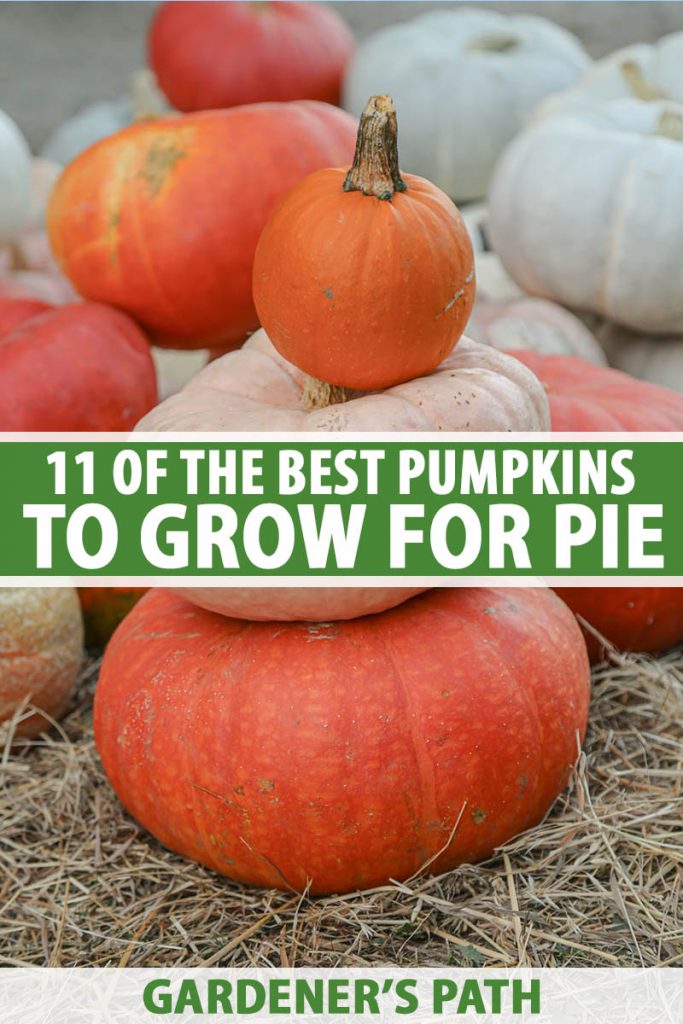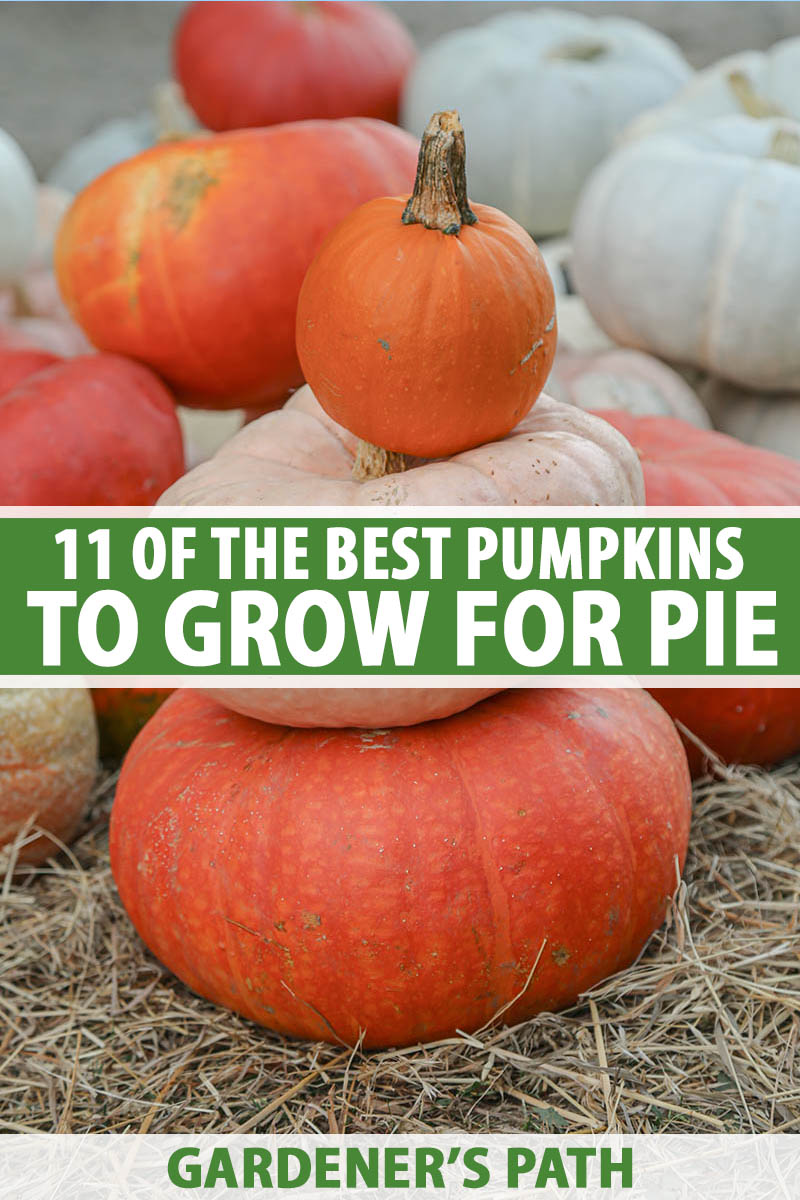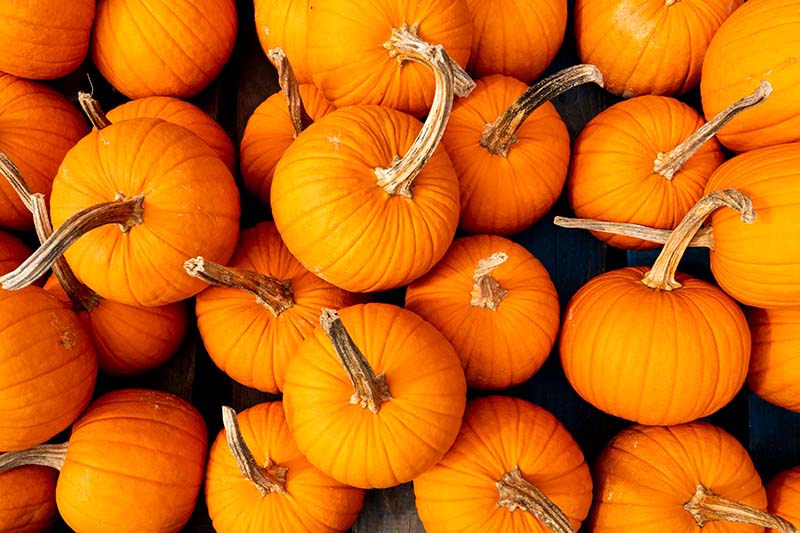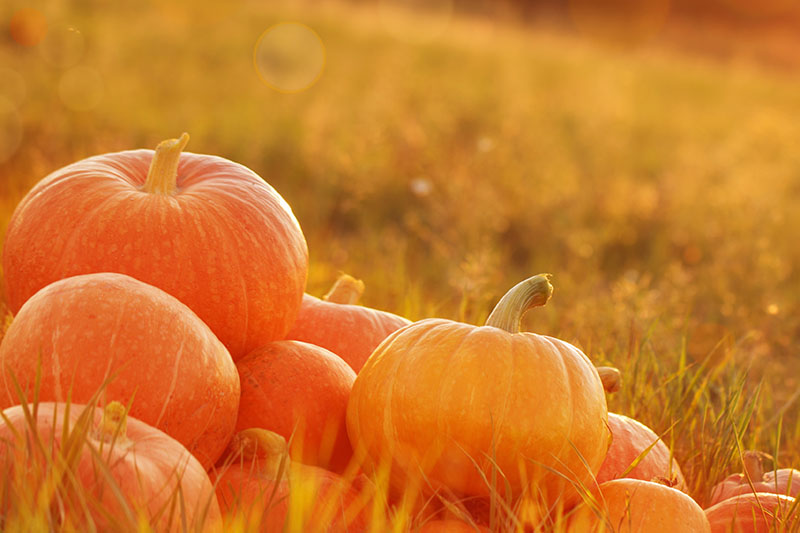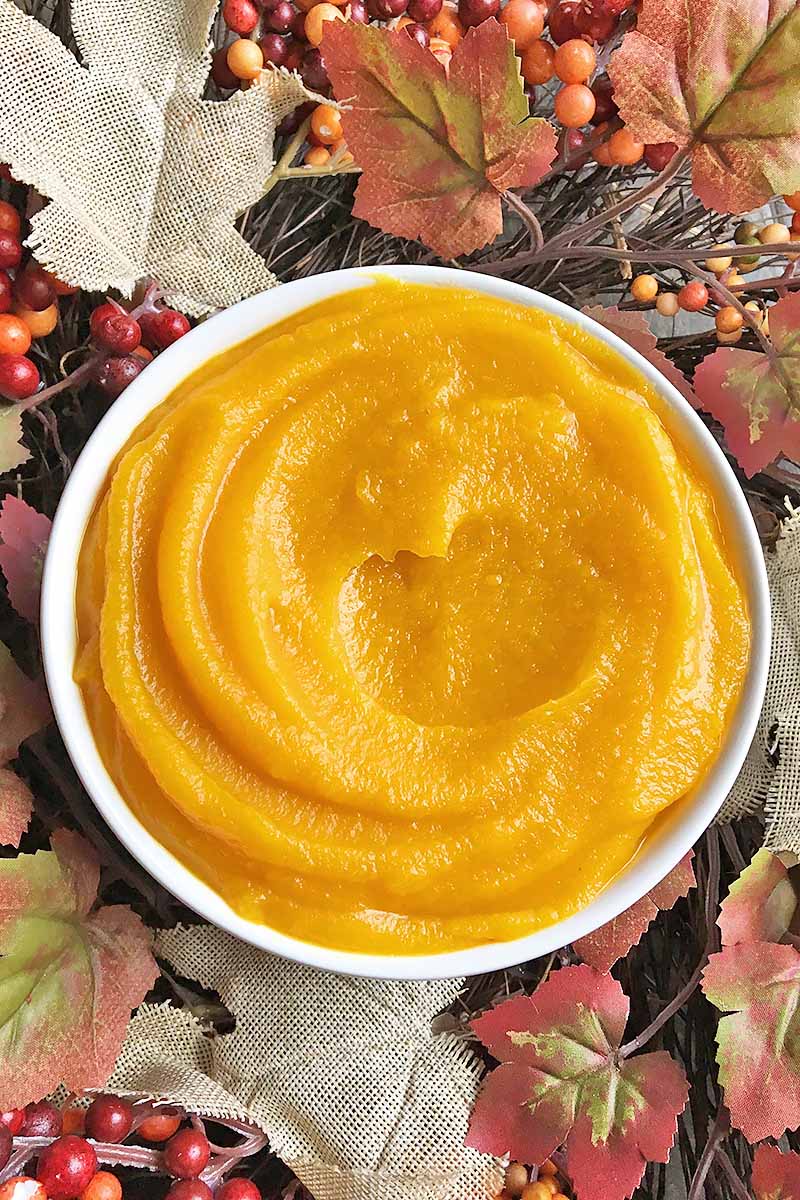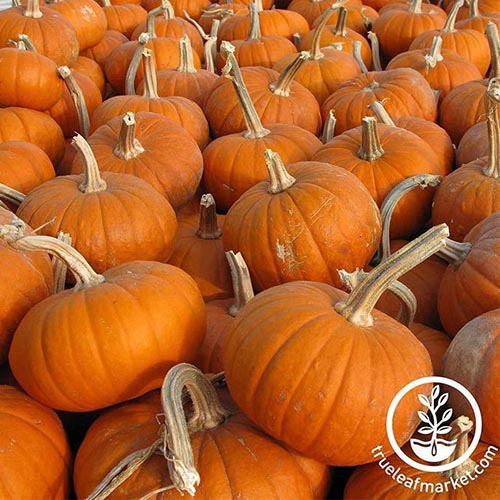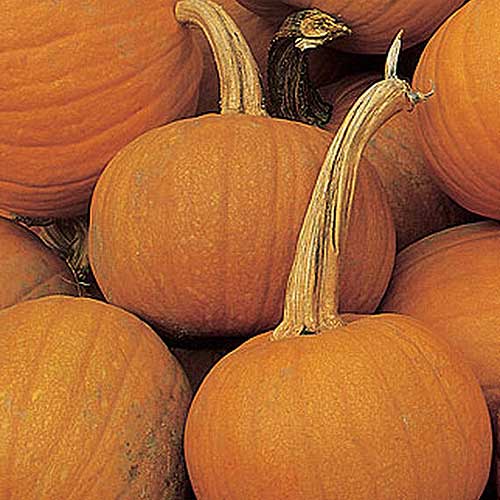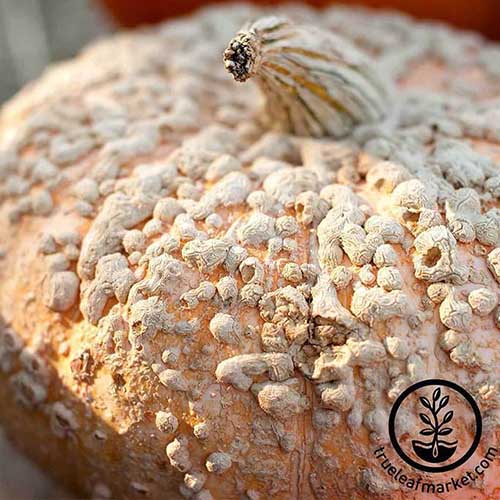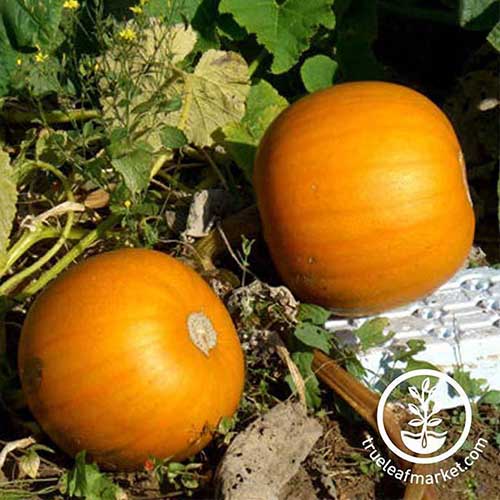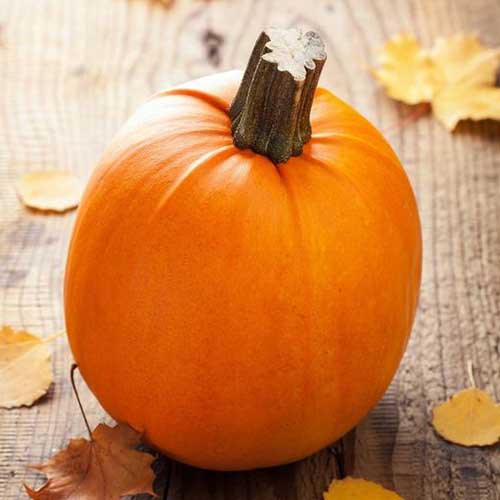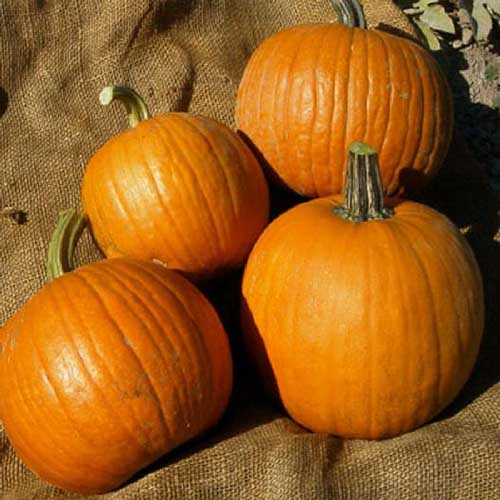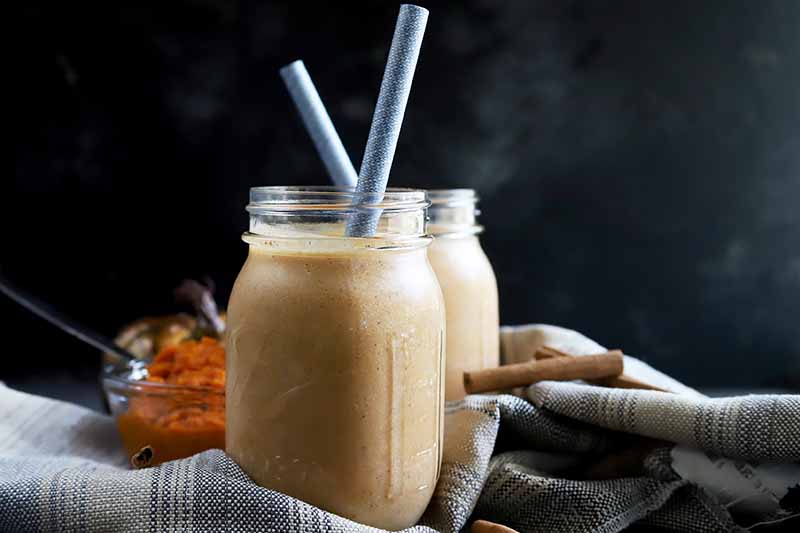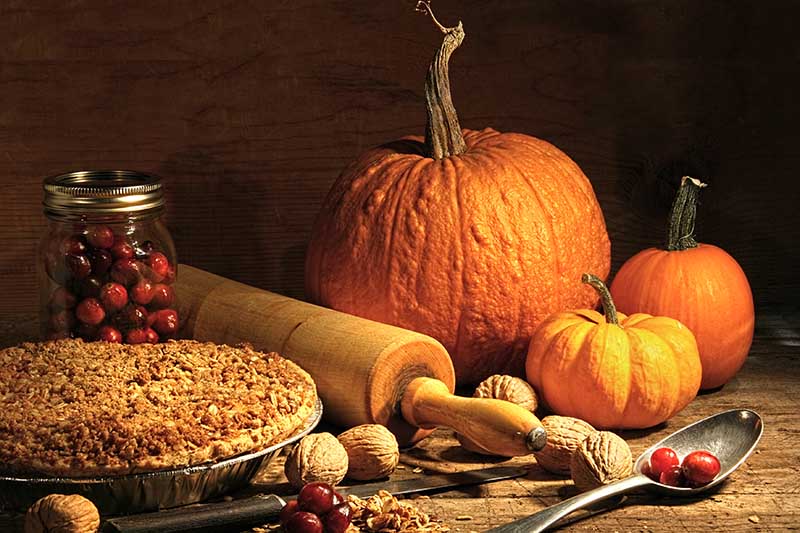Well… maybe not. Most cultivars are edible, and you can make pie out of your giant ‘Jack-O-Lantern’ or ‘Howden’ Halloween gourds, but the flesh tends to be watery, stringy, and not-so-sweet. So what are the best pumpkins for pies, purees, and other sweet treats? The short answer is this: those that have been cultivated specifically for use in cooking and baking. We link to vendors to help you find relevant products. If you buy from one of our links, we may earn a commission. Instead, they exist to delight your tongue. Let’s find out which cultivars you should plant in your garden this year, so you can enjoy homegrown pumpkin pie this fall. The line between “pumpkin” and “squash” is blurry at best and downright confusing at worst.
I’ll clear things up for you: pumpkin is a type of winter squash, Cucurbita pepo. Some pumpkins are cultivars of C. maxima and C. moschata. In this list, we’ve selected the best pie pumpkins from each of these species. A good pie gourd won’t be overly large, especially if it’s a C. pepo variety, as the big ones tends to be stringy and watery – not exactly pie material.
If you’ve ever taken a massive field pumpkin and tried to turn it into puree, you’ll know what I mean. C. maxima and C. moschata varieties have thicker flesh with a bolder, often sweeter taste. And if you have no idea how to turn your homegrown gourd into puree, never fear! Our sister site, Foodal has the how-to article you’ve been waiting for. Are you ready to grow the best baking pumpkins in your garden? Let’s get started. Here are 11 of my favorite cultivars:
1. Baby Bear
With a name like ‘Baby Bear,’ you know this variety is perfect for kids and for making the treat they love most at Thanksgiving: pie, of course. Or, you know, pumpkin spice ice cream, which you can make with this recipe from our sister site, Foodal. Each little pumpkin weighs 1 1/2 to 2 pounds at maturity, and is filled with tasty orange flesh.
‘Baby Bear’ Frost tolerant and disease resistant, this is an excellent C. pepo cultivar for gardeners in cooler growing zones. Plus, the plants produce as many as 10-20 fruits each. Find seeds in a variety of packet sizes from True Leaf Market.
2. Cinderella
For a gourd that’s both elegant and delicious, try the brightly-colored C. maxima ‘Cinderella.’ With a flattish shape and elegantly deep ribs, ‘Cinderella’ began its journey to fame years ago, as a French heirloom called ‘Rouge Vif d’Etampes.’ Long used in French cooking, legend has it that in an early version of the Cinderella story – the one featured in French author Charles Perrault’s 1697 book “The Tales of Mother Goose” – the fairy godmother would have plucked a ‘Rouge Vif d’Etampes’ from the garden. So, illustrators allegedly used the squash to help them create the perfect Cinderella carriage. And after the 1950 Disney movie titled “Cinderella” came to theaters, ‘Rouge Vif d’Etampes’ got its modern name.
‘Cinderella’ This powdery mildew-resistant cultivar matures in between 95 and 150 days, so pinpointing your estimated harvest date can be a bit of a wild card. Fruits can grow up to 6 inches tall and 18 inches wide, with a weight range of 10-25 pounds. This type is big, but smaller than Cinderella’s carriage. Full of sweet flesh, with no strings and very little water content, this variety is perfect for pie-making. You can make a lot of puree with just one squash of this type, and each plant typically produces three to five gourds. You can find seeds in a variety of packet sizes at True Leaf Market, and grow your own bright (miniaturized) Cinderella carriages for both decoration and pie.
3. Dickinson
Here’s something I didn’t know until today: The canned puree I’ve been using for years – Libby’s, which produces 85 percent of the world’s canned pumpkin – is made from a C. moschata cultivar, called the ‘Libby Select Dickinson Pumpkin.’ This particular cultivar is not available commercially, but home growers can choose the next best thing, ‘Dickinson’ squash. Honestly, this explains why the organic puree I bought at the store recently tasted different in my muffins than a can of Libby’s. Instead of having that bright orange, autumnal look, the ‘Dickinson’ cultivar looks more like a butternut squash. It actually tastes quite a lot like a butternut squash, too, which makes sense: they’re both C. moschata varieties. Because of this, some people don’t consider ‘Dickinson’ a pumpkin at all. But as pumpkins are a type of squash, others do see ‘Dickinson’ as a pumpkin, if not a particularly aesthetically pleasing one. ‘Dickinson’ Whichever side you pick, just know that ‘Dickinson’ makes an excellent pie filling, and we would be remiss to leave it out of a list like this just because of its funny appearance. If you’re looking for a rich, delicious pie, try growing ‘Dickinson.’ You won’t find the exact same seeds as Libby’s proprietary variety, but these are close.
4. Early Sweet Sugar Pie
If a cultivar has ‘pie’ in its name, you know it’ll make for excellent baking. This small yet flavorful C. pepo squash weighs about 6-7 pounds when ripe. Even better, the 6- to 7-inch fruits mature in just 90 days, making it an ideal cultivar for cold-weather gardeners (like me, here in Alaska!). As its name suggests, the orange flesh tastes sweet and squash-like – a perfect combo for making pies. Or muffins. Or bread. The plant averages about three to five fruits per vine, so be sure to plant several seeds if you want a big harvest.
‘Early Sweet Sugar Pie’ After you scoop out the flesh, turn these babies into miniature Jack-o’-lanterns. The gourds are the ideal size for kids to work with, or for anyone who can’t get enough of fall decorations. You can find packets of 35 seeds available at Burpee.
5. Galeux d’Eysines
With warty, peanut-shell-esque skin, it’s no surprise that this 10- to 20-pound C. maxima cultivar is also known as the “peanut pumpkin.” But don’t let the strange rind fool you: the inside is a treasure trove of stringless golden-orange flesh that’s just waiting to be turned into a pie, bread, or soup. Its delicate flavor tastes a bit like the best traits of pumpkins, sweet potatoes, and apples were combined into one. Can you imagine a better filling for pie?
‘Galeux d’Eysines’ It’s clear from the name that this heirloom squash comes to us from France – Eysines, in southwest France, to be exact. This variety matures in 100 days and you can finds seeds available at True Leaf Market.
6. Jarrahdale
We can thank the town of Jarrahdale, New Zealand, for this alluring bluish-greenish-gray C. maxima variety. With fruity, stringless, golden flesh, it makes absolutely excellent pies. Each plant produces 4-6 gourds weighing in anywhere from 6-10 pounds each. Fruits mature in 95 days and plants are well-suited to growers in warmer climates. So to those of you in Zones 7 and up – rejoice! This is your pumpkin. But those of us in cold-weather gardens can also enjoy this gourd, thanks to its short growing season.
‘Jarrahdale’ ‘Jarrahdale’ also keeps exceptionally well in storage or displayed decoratively after picking. You can display these beauties alongside your bigger, more decorative pumpkins – and a couple of weeks later, chop them up and roast the orange deliciousness inside for pies. You can find packets of 25 seeds available at Burpee.
7. Musquee de Provence
A favored gourd with chefs in the US and Europe, C. moschata ‘Musquee de Provence’ turns from green to a beautiful shade brown when ripe, with deep orange flesh inside. Like ‘Galeux d’Eysines,’ this squash comes to us from France. This heirloom variety produces deeply lobed pumpkins that grow up to 20 pounds in weight. So, if you need to make lots of delicious homemade treats this fall, it’s a fantastic idea to grow ‘Musquee de Provence.’
‘Musquee de Provence’ This pumpkin takes a little longer to mature than some cultivars – around 110 to 120 days. But its sweet, nutty flavor won’t disappoint you (or your guests). Find packets of 10 seeds available at Burpee.
8. Orange Smoothie
For a pumpkin that’s perfect for painting and then eating, try ‘Orange Smoothie,’ a C. pepo hybrid. Each gourd weighs just 5-8 pounds, and its flesh is sweet and almost creamy. With slight ribbing and a gorgeous orange color, these small fruits make delightful fall decorations before you chop them up for that soup or pie filling.
‘Orange Smoothie’ Grow these with the kids in your life. They won’t be disappointed with the bright orange canvas to display their artistic works – or with the tasty food that’ll come later. Find your seeds in a variety of packet sizes from True Leaf Market.
9. Small Sugar
A classic gourd for pie-making, C. pepo ‘Small Sugar’ is a smaller and more flavorful cultivar of the larger ‘Connecticut Field.’ With fine-grained flesh that is delicately sweet, ‘Small Sugar’ is less overtly flavorful than its C. maxima or C. moschata cousins, which some pie-eaters may prefer.
‘Small Sugar’ W. Atlee Burpee introduced this cultivar in 1887, and it’s still popular today. The fruits each weigh 5-8 pounds and mature in 100-105 days. With bright orange skin and hardly any ribbing, ‘Small Sugar’ also makes a nice canvas for a tiny artist to create Halloween decorations. Check out our guide to learn more about our favorite varieties of Halloween pumpkins. You can find ‘Small Sugar’ seeds in a variety of packet sizes available at Eden Brothers.
10. Spookie
Don’t be spooked by the name. ‘Spookie’ is a hybrid C. pepo cultivar – a cross between ‘Sugar Pie’ and ‘Jack O’Lantern.’
‘Spookie’ Fruits weigh about six pounds and are seven inches in diameter, with bright orange flesh that makes a tasty, fine-textured puree. If you need a break from baking but fancy a perfectly-pumpkiny treat, try this pumpkin pie smoothie recipe, also from Foodal, at any time of the year. Well, after you’ve waited the 90 days for those ‘Spookies’ of yours to mature, that is… You can find seeds in a variety of packet sizes, available at Eden Brothers.
11. Triple Treat
With a name like ‘Triple Treat,’ you know there’s something triply special about this pumpkin. Here’s what that special thing is: the hull-less seeds are perfect for roasting, the shell is excellent for carving, and the flesh is delicious for eating.
‘Triple Treat’ But here’s a tip: for the sweetest flavor, harvest your ‘Triple Treats’ when they are a little smaller than their 8-pound mature size. This variety matures in 110 days, less if you pick them early. You can find packets of 100 seeds available at Burpee.
A Gourd for Every Belly
No matter which of the above squashes you choose, you’re sure to enjoy their creamy orange flesh in any pie, baked good, soup, or smoothie.
Which variety are you growing this year? Do you have a favorite? Let us know in the comments below, and feel free to share a photo! Happy growing! For more information about growing pumpkins, you’ll need these guides next:
How to Grow Your Own Pumpkins When and How to Trim Pumpkin Vines 5 Reasons Your Pumpkin Vine Isn’t Blooming Best Companion Plants to Grow with Pumpkins
© Ask the Experts, LLC. ALL RIGHTS RESERVED. See our TOS for more details. Product Photos via Burpee, Eden Brothers, Sustainable Seed Company, and True Leaf Market. Uncredited photos: Shutterstock.
